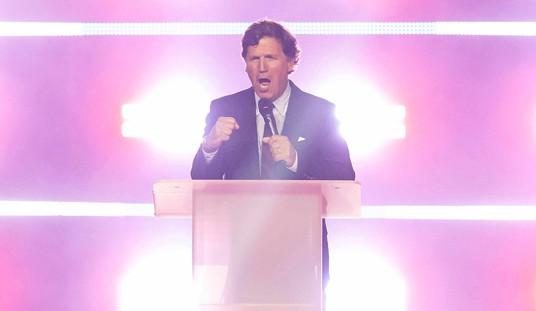Via Truth Revolt and the Daily Mail, here’s the best evidence lefties have that Dolezal isn’t the racial equivalent of Caitlyn Jenner. The basic story she tells might well be true: Albert Wilkerson, the man she passed off as her dad, did serve in the Corps and did migrate north as a young child after his father “had a confrontation with a police officer” in Birmingham. But he isn’t her father, of course, and the fact that she went so far as to steal his history to back up her own claim of being black is a step that Jenner hasn’t taken — and couldn’t take, realistically, given her fame. (Imagine her regaling a stranger with stories of the first time young Caitlyn got her period as a young girl.) Dolezal lied willingly to support her racial narrative, not just about who she is now but about who she was growing up. Jenner didn’t. Although that makes me wonder: What percentage of transgenders attempt to “pass” with fake histories and what percentage are candid about their transition? Are the former as culpable for inventing a false biography as Rachel “I identify as black” Dolezal is?
False bio or not, David French argues that Dolezal’s “transition” is more convincing than Jenner’s:
The case, then, for transgender identity seems to rest on something that looks a lot like Dolezal’s argument for her own alleged blackness. It’s a matter of very deep feeling combined with clear cultural markers. Both Dolezal and Jenner mark themselves the way they want to be seen by embracing stereotypes. Ironically, however, Dolezal is the one who adopted the correct stereotypes — liberal, oppression-minded, and activist. She “passed” for a very long time. Jenner — and many other transgendered people — embrace a big-breasted, hyper-feminine model of living that often looks like a caricature of exactly the kind of women that feminists love to hate. Most transgendered people can’t “pass” for nine seconds. So why does the Left embrace the person who adopts the wrong stereotypes and reject their NAACP ally and longtime fellow-traveler?
The difference here is ideology, specifically the ideological demands of the sexual revolution. So long as consenting adults are involved, the sexual revolutionary reasons backwards from transgressive sexual morality. The heart wants what it wants, and the rest is details (plus a healthy dose of angry activism directed at dissenters). The argument has long been that much human pain is the result of denying the heart its deepest desires, that the path of indulgence is the path of human flourishing. So if Bruce Jenner wants to be a woman, then he’s a woman.
The politics of race have evolved differently in the United States. For the Left, race is so much a matter of a precise, lived experience — combined with a specific cultural and ideological response — that there is no room for even the darkest-skinned of dissenters. Dolezal didn’t live the experience long enough, and she could drop her “blackness” anytime she wanted, so despite the apparent deep desires of her own heart, she’s not black. If you’re looking for logic in this distinction, you’ve come to the wrong movement.
Treating Jenner and Dolezal differently, I think, is a function of the difference between the gay-rights and civil-rights movements, an interesting wrinkle given that SSM supporters have spent the last decade insisting those movements are much more alike than they are distinct. The assumption in Dolezal’s case is that no privileged white American could ever truly wish to be black; the oppression blacks have experienced, from slavery to segregation to disenfranchisement, is too total. Letting her “transition” would be read by some as evidence that there are more advantages to being black than disadvantages, which would betray the civil-rights movement. Oppression is built into black racial identity. You can’t claim the identity if the oppression can be shed at will. The push for LGBT rights is, as French says, more about building cultural acceptance of gays and transgenders as normal. (No wonder that marriage, a cultural touchstone of normalcy and domesticity, is a key goal.) Jenner does more to help the cause by making himself visible, which challenges perceptions of normalcy, than he does to hurt it by suggesting, via his transition, that being “trans” isn’t so terrible a hardship in modern America that a celebrity wouldn’t be willing to embrace it if he identified that way. Job one for transgenders right now is simply letting people know they’re out there and they’re relatable; blacks, by comparison, don’t need Rachel Dolezal to convince people that racism is a problem. So Jenner “coming out of the closet” as a woman is a huge win for LGBT rights whereas Dolezal “coming out of the closet” as black is a weird nothing at best and a setback for black activists at worse.
One word in her semi-defense, though. Some critics claim she’s guilty of using “blackface” to pass, but blackface is designed to demean blacks by turning them into grotesque racial caricatures. That’s not what Dolezal did. Her make-up looks ridiculous once you’ve seen the photos of her pre-transition (the hair is a weave, in case you were curious), but it was evidently good enough for her to pass even in the halls of the NAACP. Whatever you may think of her and her ruse, her intention clearly wasn’t to demean. If that doesn’t matter then we all missed a huge boycott opportunity when Fred Armisen was playing Obama (terribly) for years on SNL.








Join the conversation as a VIP Member